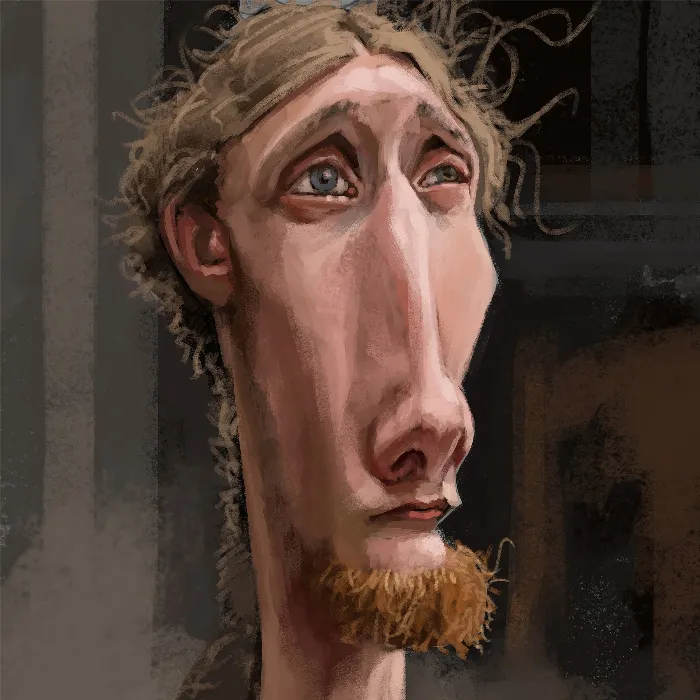Drawing is a central component of digital painting, especially in Character-Painting. In this tutorial, I will show you how to draw a typical portrait while I trace the portrait of Sven in Photoshop. The use of shapes and lines that I covered in the last module will be reflected again in this step.
Main insights
- Drawing is the foundation for digital painting.
- It is important to start with the rough shapes before adding details.
- The use of photo references can make your drawing easier, but drawing from live models is more effective for the learning effect.
Step-by-Step Guide
Start your project by opening Photoshop and selecting the right brush size and color. In my example, I use the simple pencil brush with a size of 6 pixels and black color. This brush is great for the rough structure of the portrait.
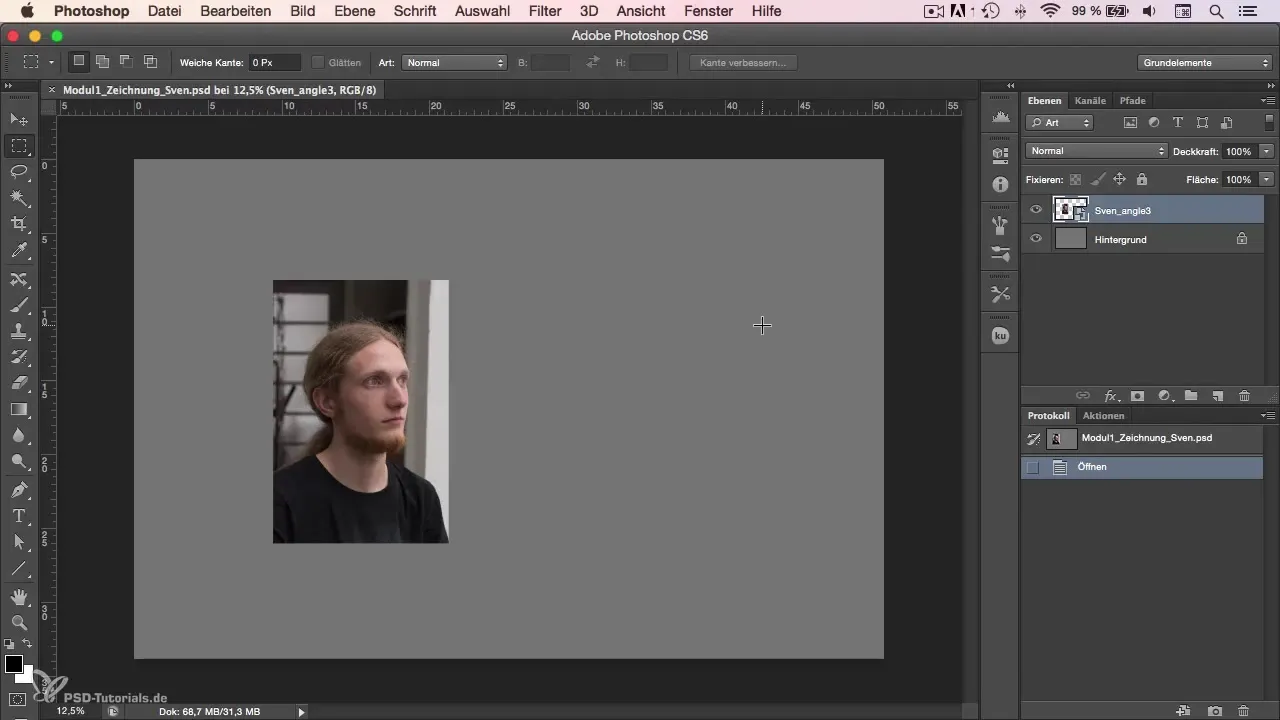
After the first stroke, it definitely makes sense to show the work in timelapse to spare you the boredom of the real-time view. Now I want to take this time to share some basic thoughts on drawing.
Drawing is not just a technique; it is a skill that you have to develop. If you think that your drawing is not good enough yet, do not hesitate to practice regularly. Practice is the key to improvement. My current drawing style has developed over the years, and even if it looks chaotic sometimes, these quick strokes help me find the right shapes.
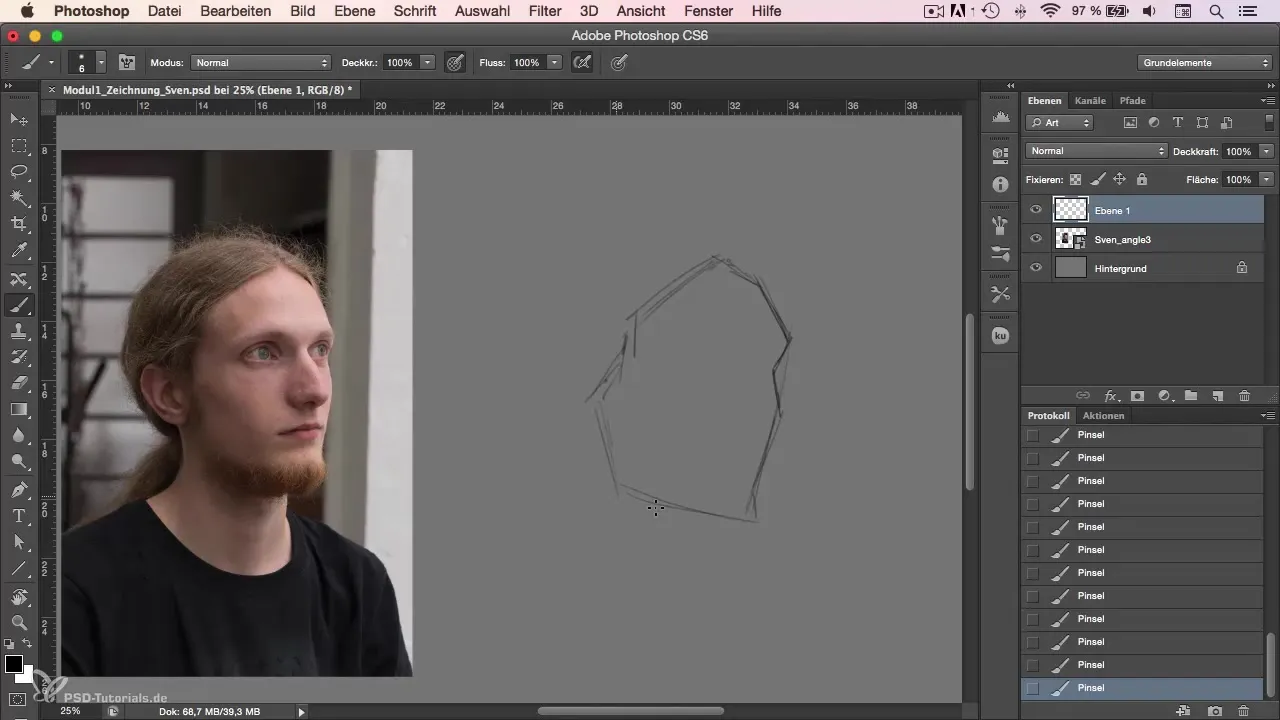
To draw a portrait, I start with the outlines. It can be helpful to first sketch the rough shapes and lines. Don't forget to mark the proportions in thirds to get a better feel for the relationship between the various facial features. I often start with the outline and then work on the eyes and the nose to find balance in the proportions.
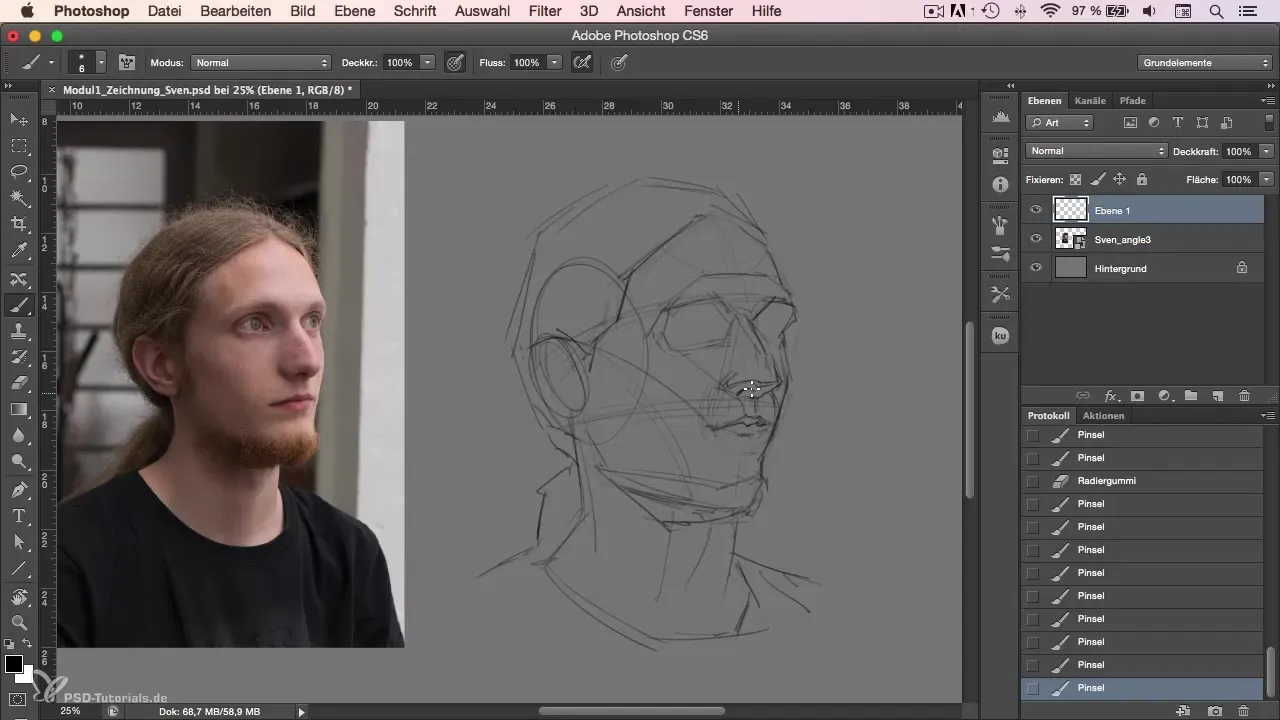
To optimize your drawing, you can also use the selection tools in Photoshop. With the lasso tool, you can select areas and adjust them with the move tool. This gives you more flexibility than drawing on paper, where you would have to erase everything, which can be very time-consuming.
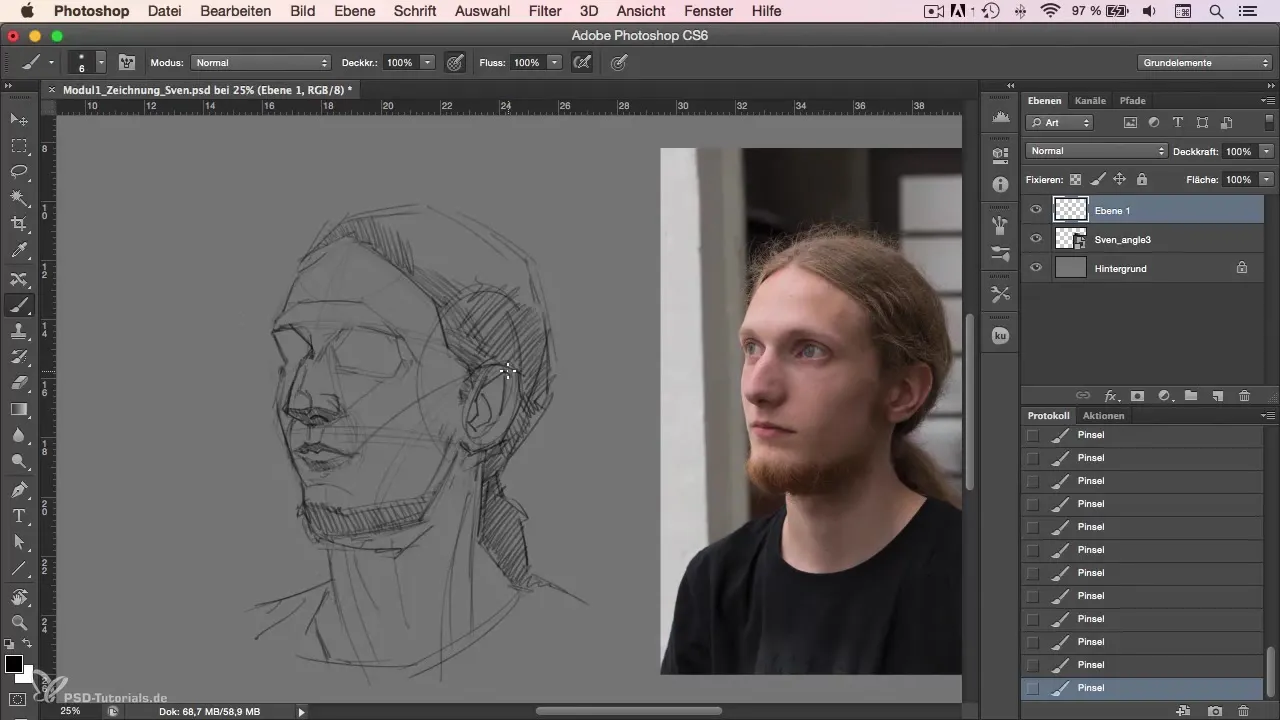
A practical tip when drawing is to occasionally mirror the workspace. When you look at your image in the mirror, you can easily spot and correct mistakes. This principle also applies to analog drawing. The mirroring effect helps you to better recognize and reject inaccurate proportions or asymmetrical shapes.
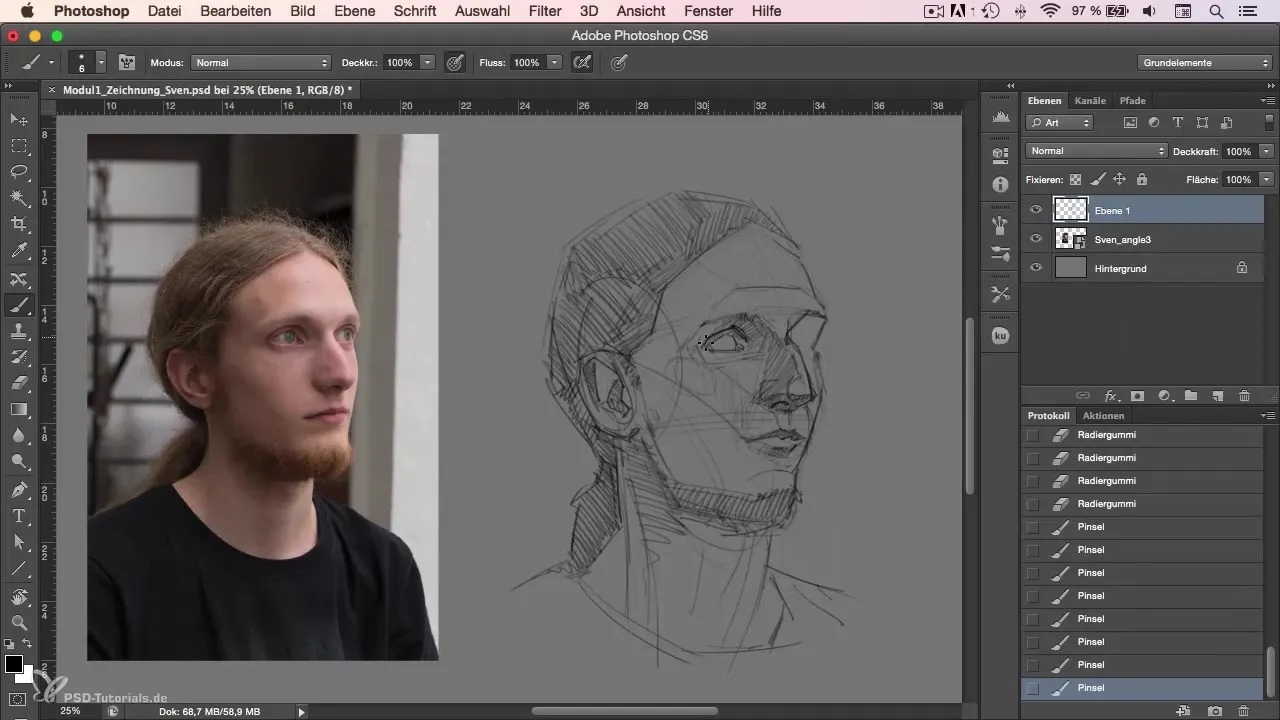
To enhance the subtleties of your portrait, use photo references. These give you the opportunity to study realistic features and proportions without needing a model to be present. However, note that it is more educational to draw from a real person, even if it brings more challenges.
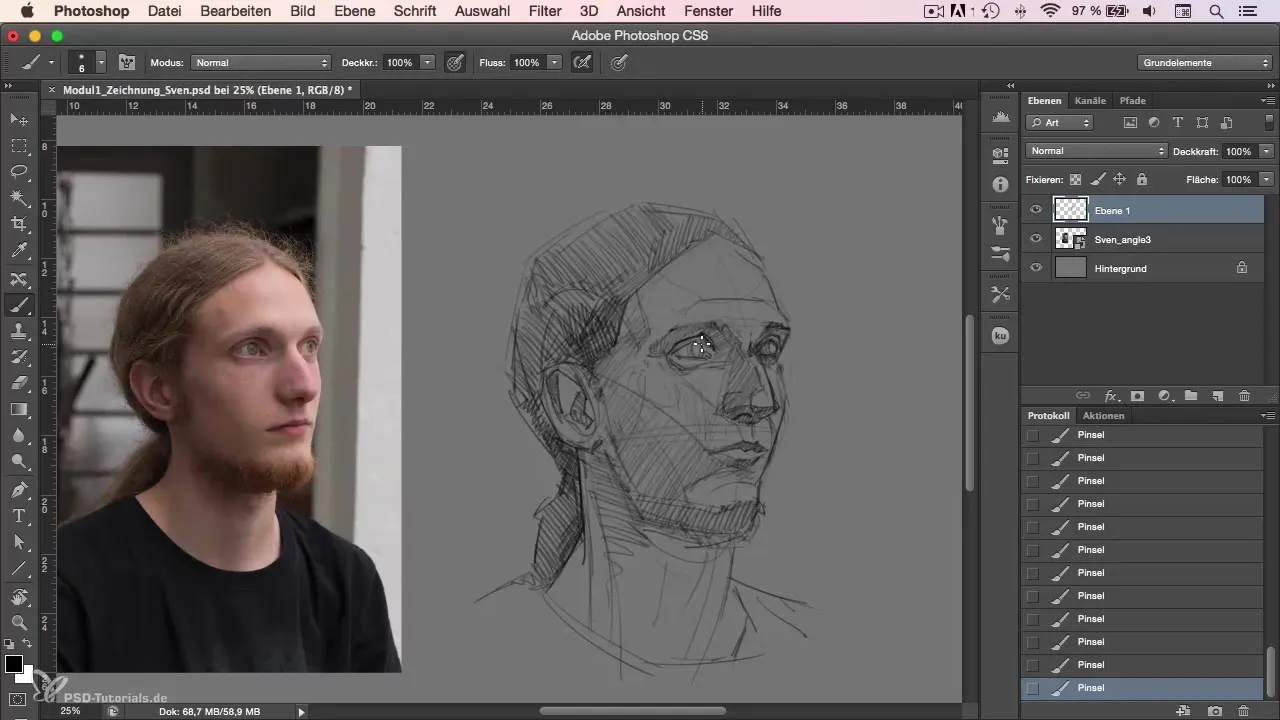
A well-thought-out portrait, as you see here, does not have minute details but serves as the basis for a later digital painting. It becomes evident that I work with rough lines to capture the defining features of the model. This approach allows me to make initial considerations about colors and the overall picture.
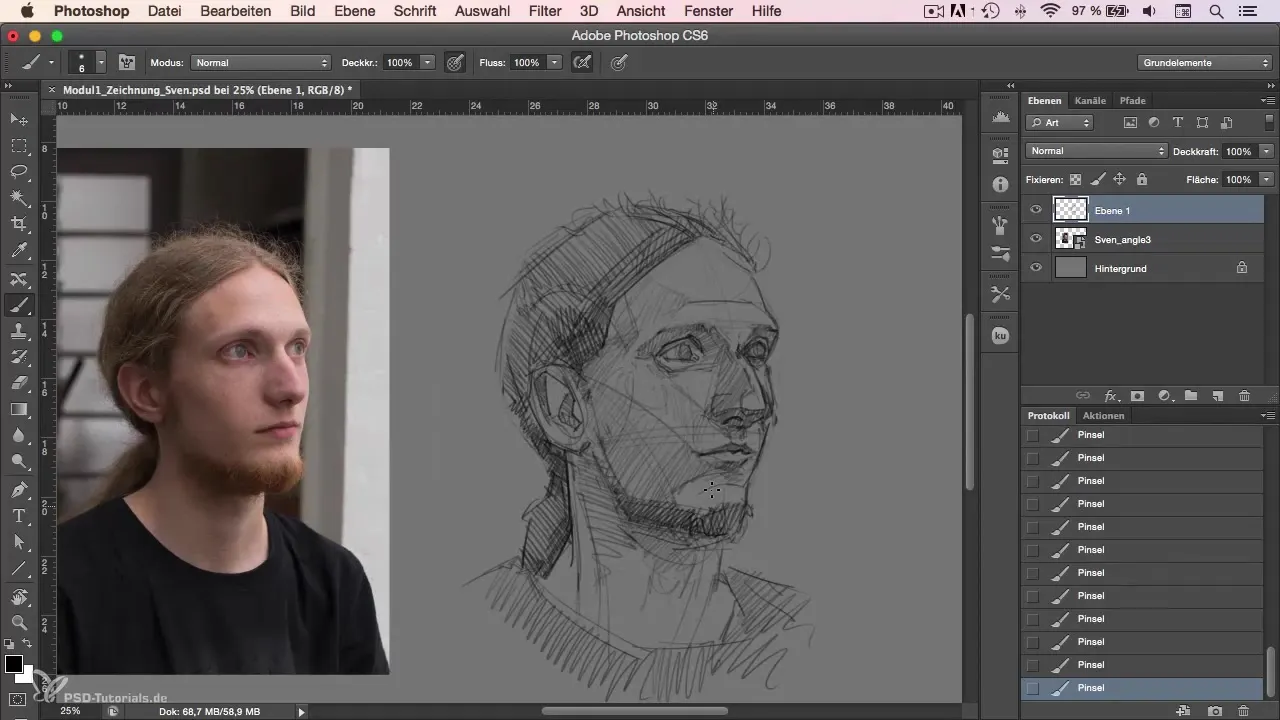
Summary - Character-Painting in Photoshop for Portraits
In this guide, you have learned how to sketch a portrait in Photoshop by starting with rough shapes and refining them as needed. Through the effective use of tools, techniques, and references, you can significantly improve your drawing skills in the digital realm.
Frequently Asked Questions
How do I start drawing a portrait?Start with the rough shapes and outlines of the face before adding details.
Why is drawing from live models better than from photographs?Drawing from live models promotes understanding of three-dimensional forms and improves learning outcomes.
Which tools in Photoshop are most helpful for drawing?The lasso tool and the move tool are extremely useful for making adjustments quickly.
How often should I practice to get better?Regular practice is crucial. Dedicate time for practicing to continuously improve your skills.
What should I do if I am unhappy with my drawing?Take time for new exercises and experiment with different techniques to develop your style.
